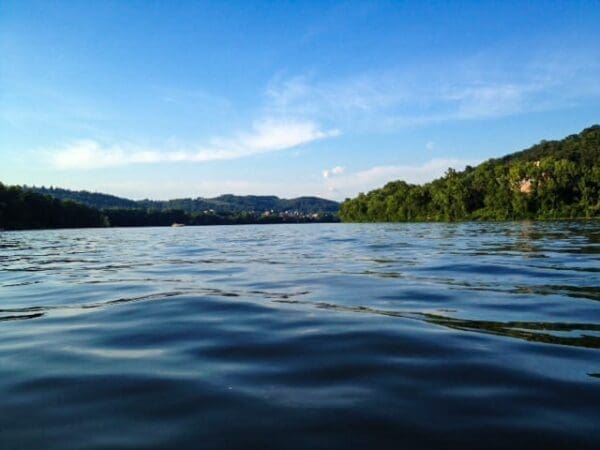(Publisher’s Note: The automobile and the remains of the two missing persons, Joni Davis and Brian Goff, were discovered by cold-case divers in the Ohio River early this past Thursday. Their bodies were reportedly inside the vehicle and were still secured by their seatbelts. The two individuals had been missing for more than three years. So, what other mysteries could be solved in future?)
There are not many stretches of the Ohio River where the depth isn’t deadly.
Maybe the back channel along the west side of Wheeling Island where, at times of the year, the water is only a few feet deep near the sandbars on the south end, but just as many bodies have been discovered back there as anywhere else in the 65 miles between New Martinsville and Steubenville.
But much more than the remains of those who jumped or accidentally and tragically fell into the Ohio River has been discovered ever since people like Ted Velas began diving into such waterways. Since 1981, Velas has been underwater in local lakes, but he’s most familiar with the Ohio River, where his diving career began.
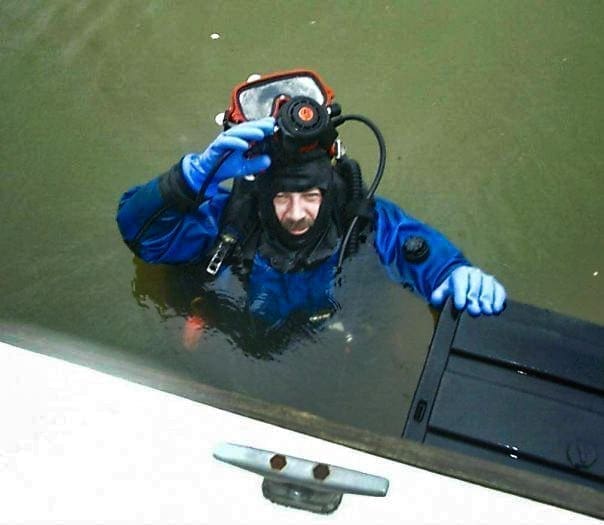
The Ohio River is created by the confluence of the Allegheny and Monongahela rivers in Pittsburgh, and it flows all the way down to the bottom of Illinois to join the Mississippi River. In some areas, the depth of the waterway is a mere 20 feet, but in others, including where the old lock system was near Warwood, it reaches down 70 feet.
“It was something that always interested me, and when I was a kid, my mom told me that I would never miss the shows like “Sea Hunt” on TV,” Velas said. “One day I saw an ad for diving lessons and thought I would give it a try. So, I took and lessons, and then I started working for the guy who taught me.
“When he quit doing it, that’s when I started doing the lessons and opened the business,” he recalled. “The dive shop (T.L. Velas Diving & Supply) was along Washington Avenue for a lot of years, but then I moved it out to National Road in Elm Grove across from Riesbeck’s, and it’s worked out well.”
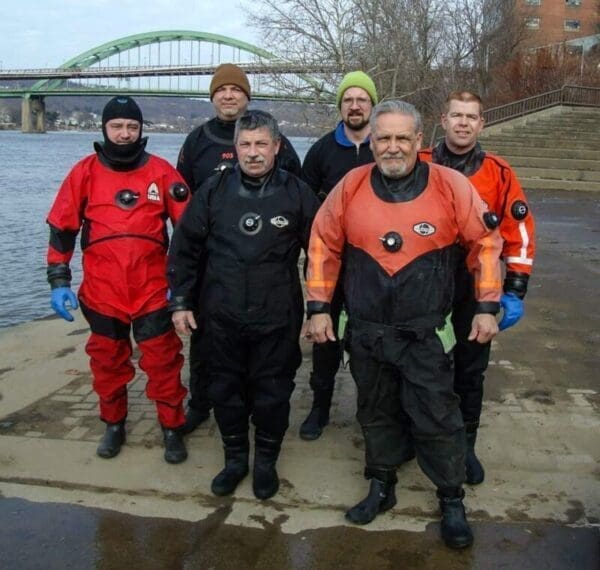
Shadows and Reflections
While many valley residents utilize the Ohio River for recreation during the warmer months of the year, there exists a long history of industrial and commercial waste that’s been ditched into the 981-mile moat for more than a century. Wheeling-Pittsburgh Steel once operated mills along the shorelines in East Ohio and the Northern Panhandle of West Virginia, and those facilities certainly contributed to the reasons why the Ohio River Valley Water Sanitation Commission dubbed it the most polluted river in the United States nearly 20 years ago.
And yet more than 3 million people in six states depend on the Ohio River for their drinking water. It has improved, Velas insists, and he bases his opinion on what his eyes can see when taking his frequent plunges.
“The visibility in the Ohio River can be a problem, but it has improved over the years,” he reported. “When I started diving, I learned how to do it in the Ohio River, and back then you could see maybe two feet in front of you. That was it. But over the years, visibility has gotten much better, but it’s still not great.
“I would say now it probably averages between eight feet of visibility and 10 to 15 feet if we haven’t had a recent hard rainfall,” Velas said. “It has definitely cleaned up in the last 40 years.”
When the Ohio River has reached over her banks and onto Wheeling Island, it is the mud left behind that presents the most daunting confrontation. Velas, though, professed the problem rests with the river’s many tributaries and not the Ohio.
“When you get into some of the deeper areas of the Ohio River, of course it’s completely dark, but you can stand on bedrock,” Velas said. “If you are diving and you get about 10 feet away from the shore, the bottom is mostly gravel. Most of the mud is near the shoreline.
“Now, if we have a hard rainfall, then the amount of mud changes for a little while, and visibility is restricted because of the debris that’s flowed from all of the tributaries along the river,” he explained. “I think a lot of people would be very surprised with the number of creeks and stream that flow into the Ohio River because there are a lot of them.”

Teeth. Yes, Teeth.
Velas and his dive team often practice search missions along the river’s shorelines, but he and his team members are occasionally called by local residents to request a discovery mission. Keys, wallets, eyeglasses, those are the norms, but this one time?
He and his crew were dispatched to South Wheeling near the Swisher International complex that once was Bloch Brother Tobacco. The mission, however, was one of the most usual in Velas’ diving career.
“It definitely was one of the more interesting things we have been asked to find,” he remembered. “I had never searched for someone’s set of false teeth. I didn’t find them, but the man’s name who did is Scott Liden, and we were diving off Captain Ed’s dock that day after getting a call that the man had somehow dropped them into the river.
“We had no idea if we were going to be able to find a person’s dentures, but Scott somehow found them. It was pretty dark and muddy, so I think he went more by feel than anything else. That’s what I was doing, anyway,” Velas said. “And I have no idea how long the man cleaned those teeth after they had been in the river overnight, but I hope he did.”
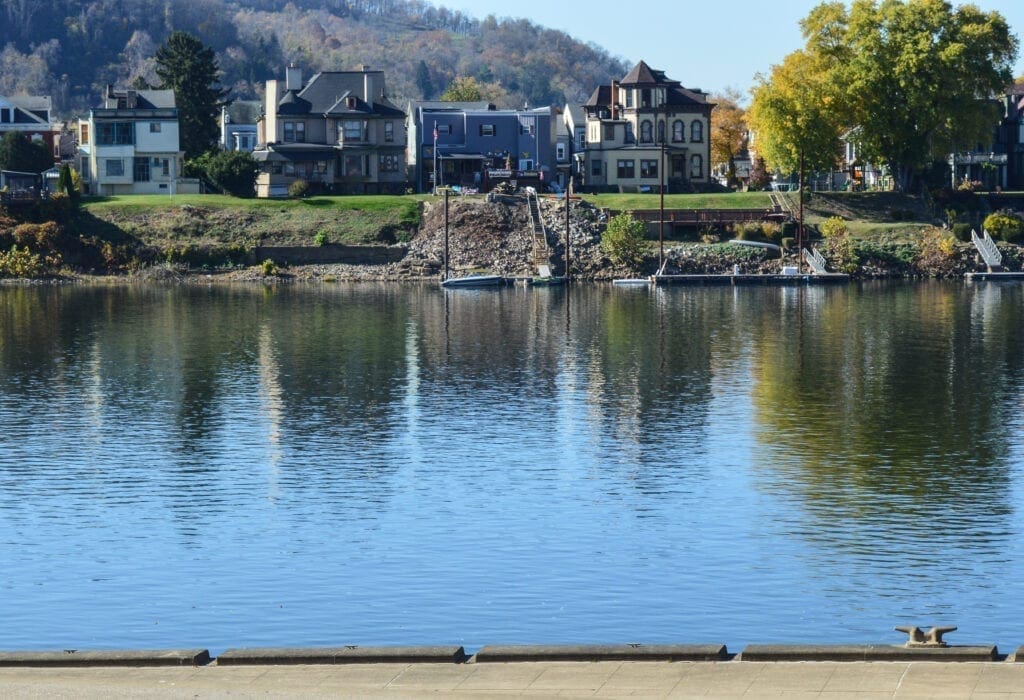
Criminal Implications
“Throw it in the river, and it will be gone forever, right? That’s probably what the crooks thought,” Velas said when describing discoveries involving handguns. “Who knows how many more guns are in there, but I’m sure we’ll keep finding them.”
It does not seem to matter where the divers train either because some of the weapons have been tossed from shorelines and bridges, too.
“Over the years, we have found probably between 15 to 20 guns,” Velas said. “There was one gun that was connected to a robbery at Banov’s in downtown Wheeling, and I found that handgun on New Year’s Day one year. It was a smash and grab a few years before I found it.
“The robbers had taken a bunch of pistols, and they got chased down to the riverbank, and they tossed them,” he said. “I remember that they caught the guy but that they didn’t recover all of the guns that were taken.”
The Aetnaville Bridge spanned the river’s backchannel on Wheeling Island’s north end, and it was open to vehicular traffic until the early 1980s. It remained a popular path for pedestrians and bicyclists until five years ago when the W.Va. Division of Highways determined it was too dangerous for walkers to cross, and it was beloved by teenagers who used the span as a diver’s board.
Based on something he found underneath the bridge, Velas feels the platform could have been employed as something of a launching pad for disposal.
“Well, there was this one time when we were diving near the Aetnaville Bridge, and we found a concrete block with a pair of tennis shoes tied to it,” he explained. “That made us all wonder that day.”
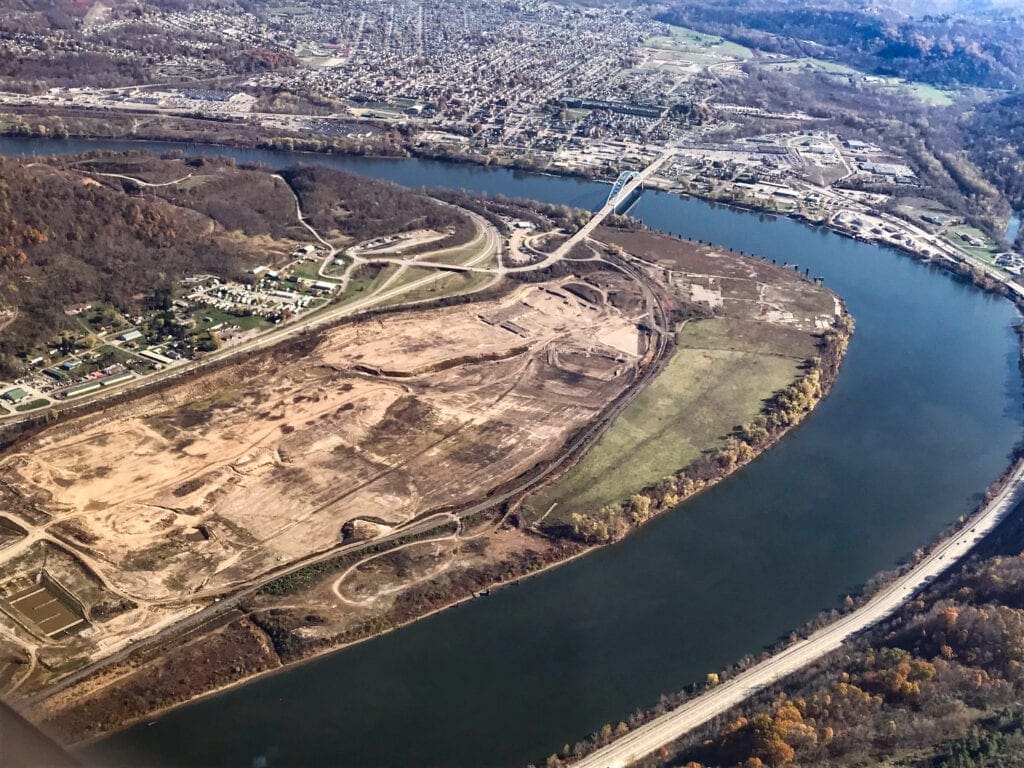
Intriguing and Infamous
Parking meters in Wheeling. Stolen goods south of Moundsville. Oh, and bowling balls near a boat ramp in Marshall County, too.
Velas and his crew members have pulled some pretty interesting articles from the bottom of the historic waterway during his four decades of diving.
“We probably pulled out several thousands of dollars’ worth of stuff in Moundsville because at the time, there was a burglary ring operating,” he said. “After we found the bowling balls, we found out that it was a thing there for the kids to take them from the old Reilly Lanes and roll them down the boat ramp.
“The parking meters were stolen in downtown Wheeling, broken into for the change inside, and then tossed,” Velas explained. “I’m willing to bet we’ll keep finding meters just off of Heritage Port.”
Prior to the demolition of the Wheeling Wharf Parking Garage in the late 1990s to make way for Heritage Port, the Velas dive team made an extraordinary find that captured the attention of residents throughout the Upper Ohio Valley.
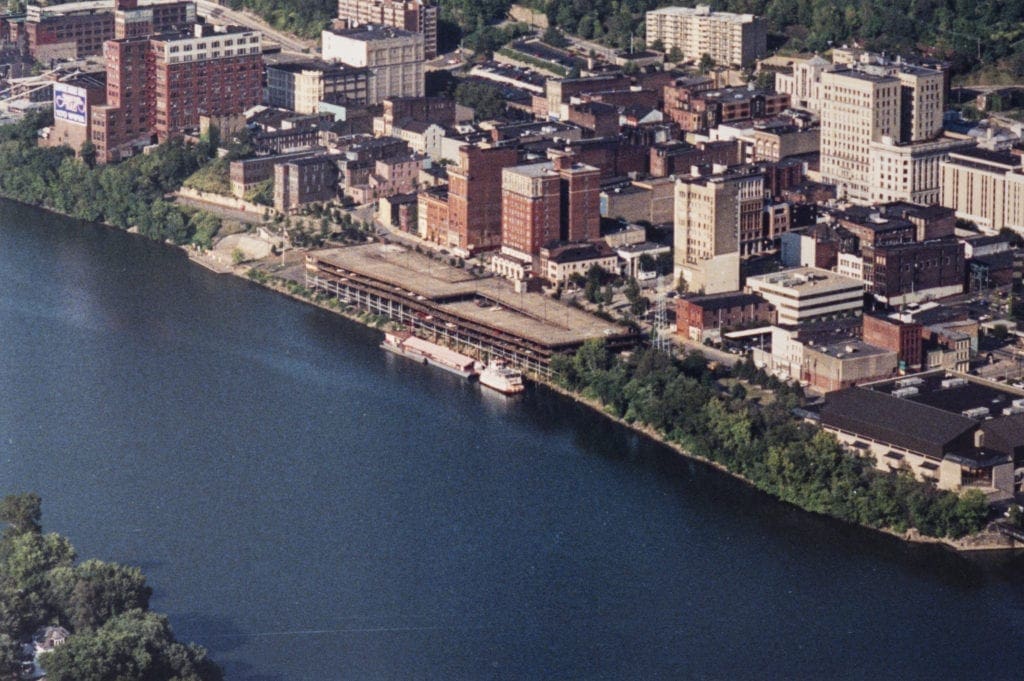
“I think the most infamous thing found in the river was the Corvette we discovered about 20-or-so years ago,” Velas said. “If you know where Heritage Port is in downtown Wheeling, it was in the river in that area. If you look at an old photo of the Wharf, there was a road that went all the way down to the very lowest level and apparently someone drove it into the river there at some point in time.
“I’m sure it was stolen because the keys were still in the ignition, but it was a mid-60s Corvette convertible, and when we found it, it appeared to be in perfect shape,” he explained. “But when it was pulled out, it just fell apart. It had been underwater for a lot of years, but because it appeared to be in such good condition, the police wanted to pull it out. After they did, there really wasn’t much left.”
The owner was never found, the VIN number had rusted away, and the Corvette did not have a license plate.
“We found that Corvette during the day and the visibility wasn’t too bad,” Velas recalled. “After we found it, you could see the car from one end to the other because it was about 10 feet under the surface. And our dive team at the time was just practicing in that area, and we had decided to search for whatever in that area.
“That same day we found a safe and a gun, too,” he revealed. “I think on that day a lot of people started wondering what else could be under the river’s surface, and when I get asked that question, I always answer, ‘Anything you can think of.’”

